The ASRock B360M-ITX/ac Motherboard Review: Tiny Take on B360, Sub $100
by Joe Shields on September 17, 2018 8:00 AM EST- Posted in
- Motherboards
- Intel
- ASRock
- Mini ITX
- 802.11ac
- Wi-Fi
- Coffee Lake
- i7-8700K
- B360
Visual Inspection
The ASRock B360M-ITX/ac looks like just about any other Mini-ITX board with its black PCB, two DRAM slots, and single PCIe slot. With real estate at a premium on small boards like this, there are a lot of features in a small area. The board includes four SATA ports and a single M.2 slot for either SATA based of PCIe NVMe drives. Being a B360 based board that does not overclock, we see the VRM heatsink isn't as large as we have seen on Z370 Mini-ITX we reviewed in the past. That said, it looks like your typical small form factor board in all black which should fit in many build themes.
One of the first things we talk about is an RGB LED implementation, but this one will be easy. It doesn't have any RGB LEDs on the board - not even an RGB LED header to add a strip to down the road. So if RGB LEDs are a need on the motherboard, one will have to look elsewhere. That said, this may be a positive to some as many simply do not want them in the first place and this likely saves a couple of dollars on the cost of the motherboard.
The board does have a total of three 4-pin fan headers in various locations, which is usually one more than most mini-ITX boards. The CPU fan header is located above and to the right of the CPU socket. Directly to the left of it is the Chassis Fan/Water pump header which supports up to 2A (24W) power whereas the other two headers output 1A (12W). The Chassis Fan/Water pump header also supports smart fan speed control and will auto-detect if a 3-pin or 4-pin (DC or PWM) fan is in use. The fans can be controlled through ASRock's FANtastic Tuning application in the BIOS or in Windows through the A-Tuning software.
Power delivery on this board is set up as five total phases with the MOSFETs and chokes to the left of the socket and the Intersil 95866C PWM regulator above it. The dual N-channel MOSFETs are from Fairchild Semiconductor (FDPC5030) and rated at 25A each while the chokes are rated at 60A. Power is supplied through a single 8-pin EPS 12V plug.
On the right side of the board, we are able to clearly see the two DRAM slots which hold down the sticks with a one-sided locking mechanism. On the bottom left corner, we can see the front panel header (closest to the edge) and a USB 2.0 header. To their right, we can see the four vertically oriented SATA ports. Continuing to move right, we can see a chassis fan header along with a front panel USB 3.0 header. Last is the 24-pin ATX plug.
The bottom portion of the board is where we will find the full-length PCIe x16 slot. Unlike other more expensive boards, the B360M-ITX/ac does not fortify the slot. Just above the PCIe slot is the M.2 slot which is capable of supporting both PCIe NVMe devices, as well as SATA based M.2 modules. When using a SATA based M.2 module, SATA port 0 will be disabled.
The rear IO is fairly simple but should offer users what is needed, perhaps not in the quantities many would like to see though. The left side has the video outputs, HDMI, DVI-D, and a DisplayPort for using the integrated graphics on the CPU. To the right of that, we can see a legacy PS/2 port and the Intel I219-V Gigabit Ethernet port. Below these are four USB ports (2x USB 3.0 and 2x USB 3.1 - the latter under the Ethernet port). Continuing right, we see the 802.11ac Wi-Fi module which supports speeds up to 433 Mbps (a bit slower than most, but still enough for most users). Last but not least is the audio stack. Here we see a 3-plug implementation that is fed to the ALC887 codec.
- 1 x HDMI
- 1 x DVI-I
- 1 x DisplayPort 1.2
- 1 x PS/2 port
- 2 x USB 3.0 ports
- 2 x USB 3.1 ports
- 1 x RJ45
- 1 x Wi-Fi module
- 1 x 3-plug Audio stack
In the Box
ASRock includes the following:
Also a fairly barren accessory package, but it still includes what is needed to the system up and running.
- Quick Installation Guide, Support CD, I/O Shields
- 2 x SATA cables
- 2 x ASRock Wi-Gi 2.4/5 Ghz antennas
- 1 x Screw for M.2 socket


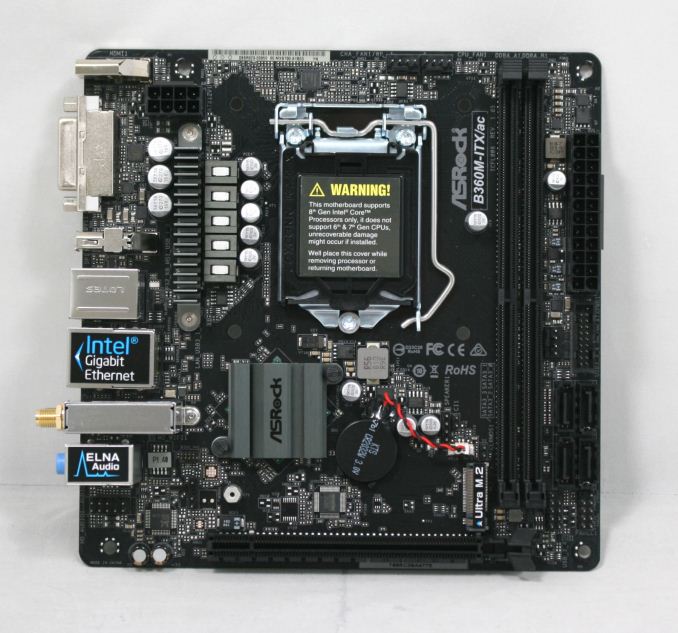
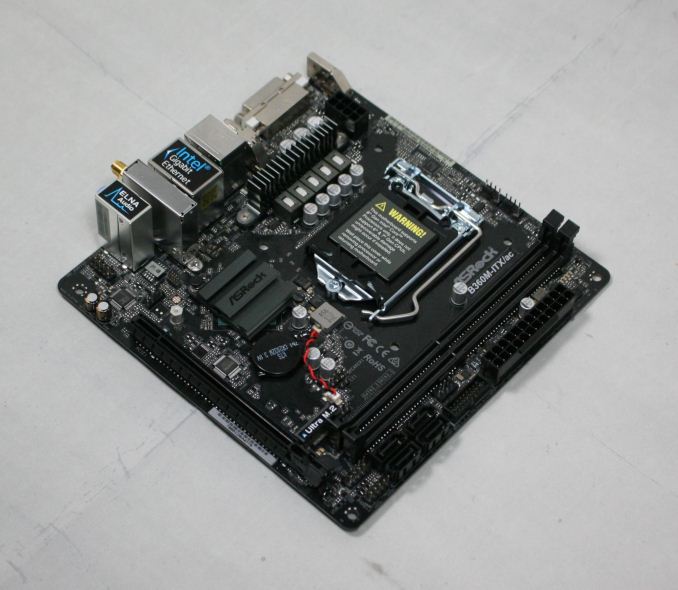
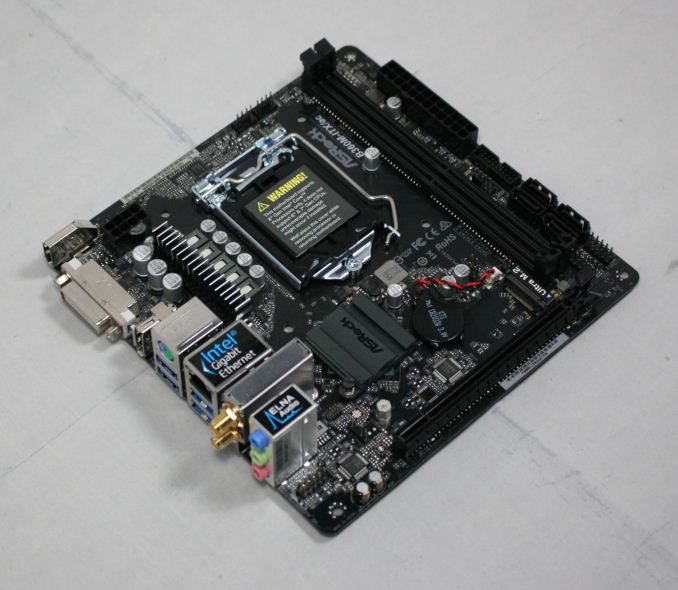
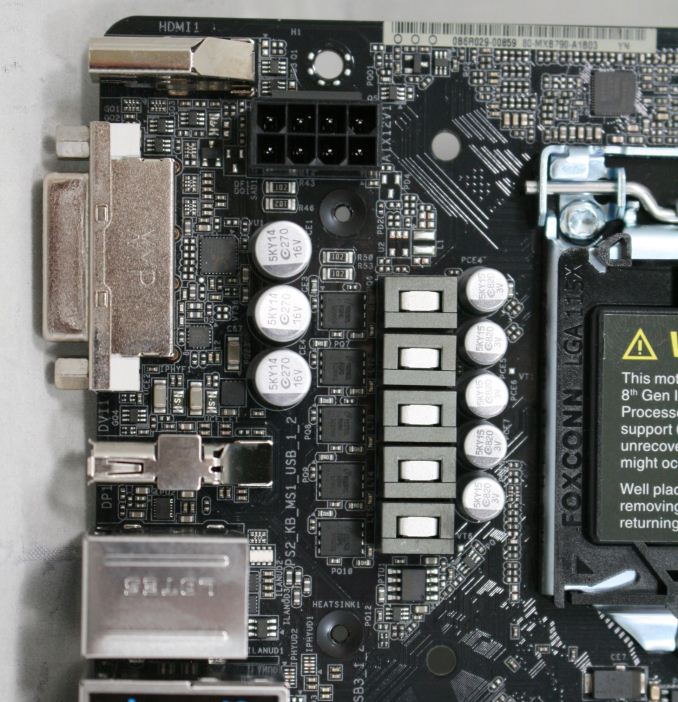
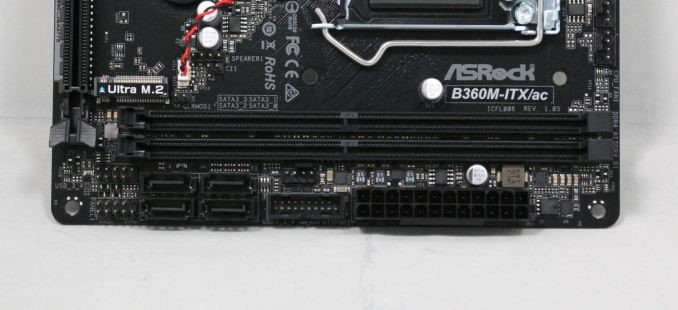
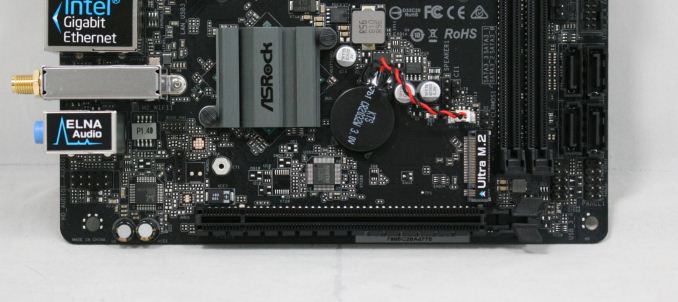

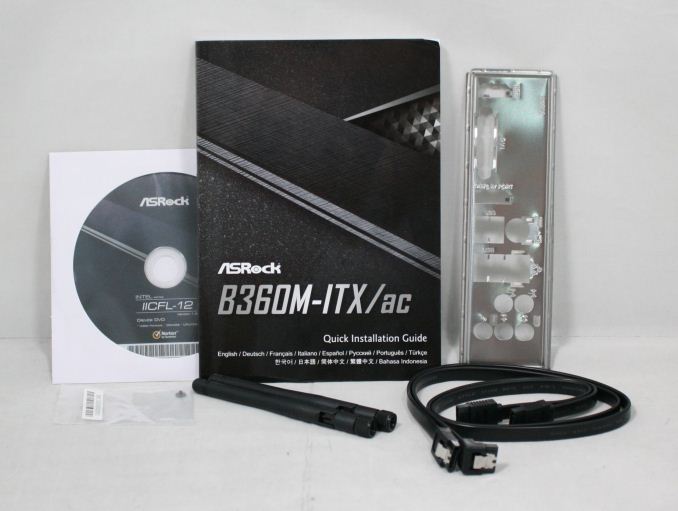














23 Comments
View All Comments
katsetus - Monday, September 17, 2018 - link
So... It's not very good?Power delivery being overloaded by a "95 watt" CPU is not a good sign. Everyone knows that Intel's TDPs are by and large arbitrary numbers, especially motherboard engineers.
Although, I guess, same as you do, that this will not be paired with higher-end CPUs and neither will they be pushed to the limits. Still, a poor effort in my mind, especially for a B-series motherboard.
PeachNCream - Tuesday, September 18, 2018 - link
I'm thinking the 8700k is an outlier CPU in this motherboard under those particular workload conditions would be unusual. It's likely any of the non-K i5 and i3 processors equipped with a retail boxed cooler wouldn't exhibit the same problems when fully loaded. They're far more likely candidates for a motherboard in this price range anyway.Yeah, it the board should handle the workload better given its rated for a 95W chip, but it doesn't make a lot of sense to cheap out on the motherboard when trying to squeeze everything you can out of a K CPU.
Mr Perfect - Wednesday, September 19, 2018 - link
This makes me wonder how well it would do with an 8600 non-k. It's a little silly to get a Z3x0 overclocking chipset for a locked processor, so a B360 like this would have been worth considering.Yaldabaoth - Monday, September 17, 2018 - link
Page 8: " On the audio side of things, the Realtek ALC887 codec is used and supports 7.1ch surround. "Please educate me. How can this board support that with the audio I/O it provides? Doesn't it need more, or am I that behind the times?
katsetus - Monday, September 17, 2018 - link
*To configure 7.1 CH HD Audio, it is required to use an HD front panel audio module and enable the multi-channel audio feature through the audio driver.The jacks have 2 poles, so you get 4 channels from front panel.
Also a fun fact: ALC887 is now over 10 years old.
Yaldabaoth - Monday, September 17, 2018 - link
Thanks for that insight!kmi187 - Monday, September 17, 2018 - link
What I found funny about this chip is that it can sound extremely horrible, and also very good. A lot depends on how the manufacturer decided to implement the chip on the board and with what components. Since they usually end up in very cheap boards, not a lot attention is given so most people think they sound bad. Rightfully so, if you hear bad sound, it's probably bad. But then on other boards with the same chip, it can sound really nice.Now I'm not saying this is a great chip, it's average at best and that's all it ever will be. But how it's implemented on a board, defenitly makes a difference in the end result that you get to hear.
bigpondsupport - Tuesday, September 18, 2018 - link
For more details http://bigpondsupporthelp.strikingly.com/Samus - Monday, September 17, 2018 - link
The audio codec kills the board as an option for me. I'm looking to build an i5-8400 replacement for my FT03-mini still running an H87 Xeon V3 board. Basically I'd like NVMe M.2, native USB 3.1, and modern PCIe.But since ITX boards naturally only have ONE PCIe slot, every other component needs to be future-proof. The ALC 887 IS NOT future-proof. It's a terrible codec by modern standards. The SNR isn't competitive no matter how it is implemented.
The fact it struggled with a 95w CPU isn't all that surprising, but follows the theme of corner-cutting through this boards development. This would be a good board for $50-$60, because it's obviously the worst ITX board you can buy for Coffee Lake. At it's current price it's a no-brainer to just buy the ASUS for $20 more...
vlado08 - Monday, September 17, 2018 - link
I don't think there is a HDMI 2.0 on this board